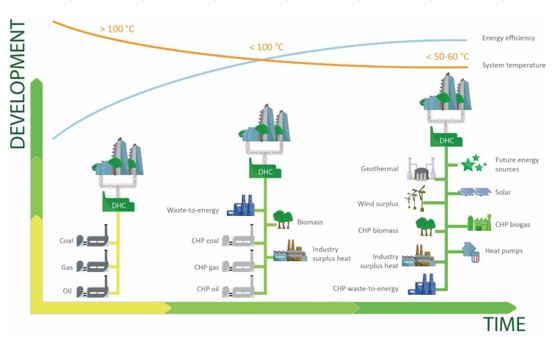District heating and cooling systems consist of heating and/or cooling production facilities and distribution grids similar to electricity systems. They essentially produce heating and cooling energy remotely and transport it to the consumers. The sizes, temperatures, and energy supply options within these systems vary greatly across Europe and the World. The first and second generation of district heating systems usually refer to older and less efficient networks operating at high supply temperatures, above 100°C, and are usually supplied with heat predominantly produced from fossil fuel sources. The working fluid in first-generation district heating systems is steam and in the second generation, it is pressurized water. Cooling is rarely if ever a part of such systems.

Source: Upgrading the performance of district heating networks, Tehnical and non-technical approaches, Upgrade DH Handbook
Due to the high supply temperatures of these systems, which are usually the result of inefficient buildings which require them, the options for the utilization of renewable energy sources are limited.
Because of this, the first step towards the renovation of the district heating system is to refurbish the buildings. Once all buildings are refurbished, the district heating can be adapted by reducing the supply temperature to 60°C, which allows the inclusion of renewable energy sources (solar thermal, waste heat) and heat pumps as energy sources in the grid.
If not all buildings are refurbished, another possibility is to reduce the supply temperature of a part of the district heating system and use the return heat from the traditional part to supply the part of the grid with a lower temperature (cascade use of heat).
Comments ()